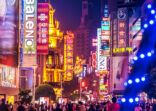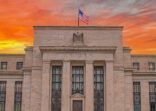Based on data from FE Analytics and Morningstar China, FSA selected eight funds managed by foreign fund management firms, and 19 funds managed by mainland-related groups, which are mainland domiciled funds selling in Hong Kong via the Mutual Recognition of Funds scheme (southbound funds).
For the comparative analysis, both groups of funds had to be available for sale in Hong Kong and performance has been denominated in US dollars.
The eight funds from foreign managers that primarily invest in A-shares:
|
Fund name |
3-year |
Volatility |
Characteristics |
|
|
1 |
Allianz China A-Shares |
78.19% |
27.02 |
all A-shares via QFII |
|
2 |
BlackRock China A-Shares |
42.23% |
26.33 |
primarily A-shares via QFII or Stock Connect |
|
3 |
HS China A Share Focus |
36.95% |
30.52 |
at least 70% A-shares via QFII |
|
4 |
Manulife China A Segregated Portfolio |
30.7% |
28.94 |
at least 70% A-shares |
|
5 |
BEA China A Share Equity |
27.97% |
26.33 |
at least 70% A-shares mainly via QFII |
|
6 |
Templeton China Opportunities |
19.98% |
25.04 |
Mainly A-shares |
|
7 |
HS China A-Share Flexipower |
16.74% |
29.98 |
at least 70% A-shares via QFII |
|
8 |
Invesco China |
7.6% |
25.73 |
at least 70% A-shares |
|
Average |
32.5% |
28.02 |
|
Source: FE Analytics, fund factsheets
Compared with the MSCI China A index, only the Allianz fund has beaten the benchmark (78.2%), which returned 42.8% in the same period.

In general, the 19 MRF products have performed much better than the rest of the funds.
| Fund | 3-year gross return (as of 22/7/2016) |
Volatility | |
|
1 |
Dacheng Domestic Demand Growth Mixed Fund |
127.78% | 36.19 |
| 2 | GF Industry Leaders Mixed Assets Fund | 122.07% | 34.93 |
| 3 | CCB Principal Selected Growth Mixed Asset Fund | 121.94% | 28.24 |
| 4 | HSBC Jintrust Large Cap Equity Securities Investment Fund | 119.28% | 30.54 |
| 5 | HSBC Jintrust Dynamic Strategy Mixed Securities Investment Fund | 114.54% | 32.55 |
| 6 | China Southern Selected Value Mixed Securities Investment Fund | 110.58% | 32.5 |
| 7 |
CIFM China Sector Rotation Fund |
81.39% | 39.95 |
| 8 | Bosera Yufu CSI 300 Index Fund | 73.36% | 28.93 |
| 9 | ChinaAMC Xinghua Mixed Securities Investment Fund | 73.31% | 30.39 |
| 10 | Bosera Value Mixed Fund | 69.16% | 27.47 |
| 11 | BOC Income Mixed Securities Investment Fund | 64.74% | 30.65 |
| 12 | Franklin Sealand China Prospect Mixed Assets Fund | 56.98% | 31.78 |
| 13 | ICBCCS China Core Value Mixed Fund | 56.8% | 32.58 |
| 14 | Invesco Great Wall Core Competence Mixed Securities Fund | 56.57% | 32.93 |
| 15 | BOCOM Schroder Growth Mixed Securities Investment Fund | 55.98% | 33.27 |
| 16 | BOCOM Schroder Stable Allocation Mixed Securities Investment Fund | 50.72% | 35.63 |
| 17 | BOC Sustainable Growth Mixed Securities Investment Fund | 48.9% | 37.08 |
| 18 | CIFM China Emerging Power Fund | 43.86% | 40.52 |
| 19 | ICBCCS China Prudent Growth Mixed Fund | 22.97% | 40.32 |
| Average | 77.4% | 33.5 |
Source: Morningstar
Morningstar China research analyst Lim Yao attributed the higher performance of the MRF funds to several factors, including local knowledge.
“MRF funds are operated by local fund managers, who would be more familiar with the China market than foreign asset managers.”
Additionally, share class investments differ. Non-MRF funds can invest in either A- or H-shares but MRF funds are only allowed to invest in A-shares.
The different share classes may also account for the lower average volatility of the funds managed by foreign asset managers because Hong Kong listed equities (H-shares) tend to be less volatile than their counterparts listed on China’s domestic markets (A-shares).
Meanwhile, because MRF funds started selling in the SAR only at the beginning of the year, FSA used the fund’s performance in the onshore China market before MRF (a different share class than A or H) in the chart above.
Luke Ng, senior vice president of research at FE Analytics, noted that because the share class is not available in Hong Kong, the performance is for reference only.
















